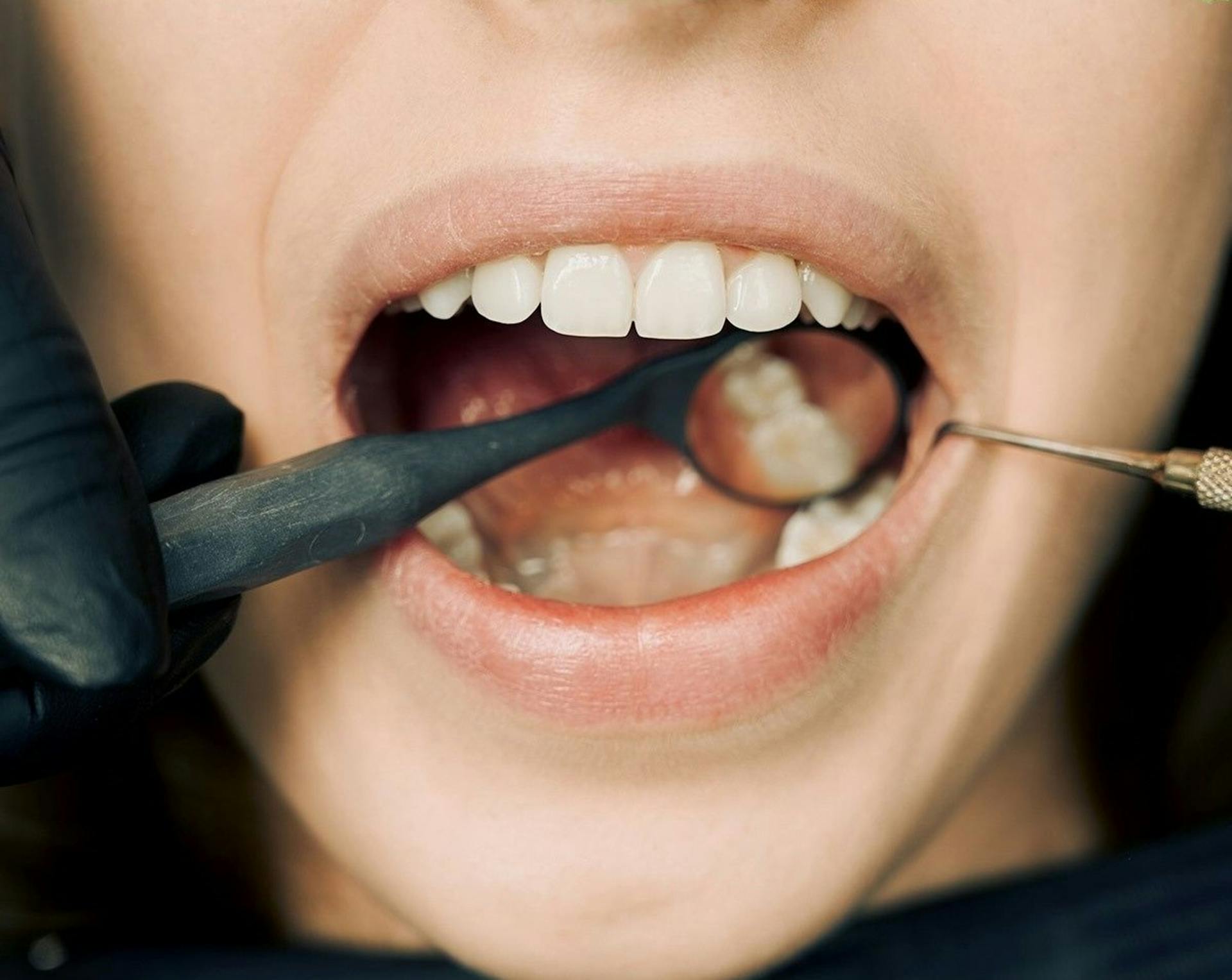
Most dental insurance plans cover X-rays, but the frequency of coverage varies depending on the type of X-ray and the reason for the procedure.
Typically, dental insurance covers routine X-rays every 12 to 24 months, depending on the individual's oral health needs.
However, some insurance plans may cover more frequent X-rays for patients with a history of oral health issues or those who are at high risk for developing certain conditions.
For example, patients with a history of tooth decay or gum disease may be eligible for more frequent X-rays to monitor their condition.
Broaden your view: Does Insurance Cover X Rays
Types of X-Rays
Dental X-rays come in several types, each with its own unique purpose.
Intraoral X-rays, which are taken inside the mouth, are the most common type. They're used to detect problems between teeth and below the gum line.
Bitewing X-rays, a type of intraoral X-ray, are particularly useful for spotting cavities and signs of gum disease.
Panoramic X-rays, which capture a wide view of the mouth, are often used to evaluate the alignment of teeth and the presence of any abnormalities in the jawbone.
Intriguing read: Does Insurance Cover X Rays at Urgent Care
Bitewing X-Rays
Bitewing X-rays are taken during routine dental check-ups to check for cavities between teeth. Most insurance plans cover bitewing X-rays once or twice a year.
These X-rays show cavities in between your teeth and changes in bone level, which may be impacted by gum disease. They usually consist of two or four images that allow the dentist to view all the teeth located in the back of the mouth.
Bitewing X-rays are typically taken at a routine checkup appointment.
On a similar theme: Dental X Ray Cost with Insurance
Occlusal
Occlusal X-rays capture the roof or floor of the mouth and are used to find extra teeth, teeth that have not yet broken through the gums, jaw fractures, a cleft in the roof of the mouth, cysts, abscesses, or growths.
Coverage for occlusal X-rays depends on the plan and the clinical need.
Cephalometric
Cephalometric X-rays are often used in orthodontics to show an entire side of the head.
Their coverage will vary based on the insurance policy and the specific need for the X-ray, especially if it's related to orthodontic treatment planning.
It's crucial to understand that insurance coverage for X-rays can be unpredictable, even with general frequencies.
Some insurance policies might have limitations or waiting periods, while others may be more flexible if the dentist provides justification for the need.
To ensure you're covered, verify your insurance provider's policy before getting X-rays taken.
Dental Insurance Coverage
Dental insurance coverage for X-rays can vary significantly depending on your plan. Factors that can affect coverage include the specifics of your dental plan.
Preventive services, like routine cleanings and X-rays, are often covered at a high percentage or even 100%. Bitewing X-rays, typically taken during routine dental check-ups, are usually covered once or twice a year.
Dental services are categorized into different tiers, which can influence coverage. Here's a breakdown of how X-rays are categorized:
Knowing how your plan covers specific dental services can make a difference if you need to have expensive dental work done. It's crucial to familiarize yourself with your specific dental insurance policy and contact your insurance provider to verify coverage before getting X-rays or any other dental procedure.
Policy Details
Review your policy documentation to understand what's covered. This is usually found in your policy booklet or coverage document, which insurance companies provide to policyholders.
You can also check for waiting periods, which may apply if you're newly enrolled in a dental insurance plan. Some services, including X-rays, might not be covered immediately.
To confirm what's covered, check your policy document for details about X-ray coverage. This will give you a clear understanding of what to expect from your dental insurance plan.
A unique perspective: Delta Dental Insurance Implant Coverage
Annual Maximums
Annual Maximums can be a significant concern for dental patients. Most dental insurance plans have an annual maximum amount they'll pay for services.
If a patient has reached this maximum due to other dental procedures, they might be responsible for the full cost of X-rays, even if they are typically covered. This can be a costly surprise for patients who didn't plan for it.
Review Policy Documentation
Reviewing your policy documentation is a crucial step in understanding what's covered under your insurance plan. It's usually provided by the insurance company in print or electronically.

Check your policy booklet or coverage document to find a list of covered services. This will include details about X-ray coverage.
Insurance companies typically provide this document to policyholders. It's a good idea to review it carefully to avoid any surprises.
You can usually find the policy document in the same place where you received your insurance policy. If you're not sure, try contacting your insurance company directly.
Here are some key things to look for in your policy document:
- Details about X-ray coverage
- Other covered services
Limitations and Exclusions
Dental insurance plans often have frequency limits on how often certain X-rays can be taken and covered. These limits can vary depending on the type of X-ray.
For example, bitewing X-rays might be covered once or twice a year, while a full mouth series or panoramic X-ray might be covered once every 2 to 5 years. It's essential to check your plan's specific limitations to avoid any surprise costs.
To avoid any confusion, make sure to check your dental insurance plan for frequency limitations on X-rays. This will help you plan your dental care and avoid any unexpected expenses.
Here's a quick rundown of some common frequency limitations:
- Bitewing X-rays: covered once or twice a year
- Full mouth series or panoramic X-ray: covered once every 2 to 5 years
Importance and General Rules
Dental x-rays are a crucial part of your dental exam, showing your dentist where there may be cavities and the condition of your teeth and bone hidden below the gum line.
X-rays can reveal problems that are not visible to the naked eye, giving your dentist a more accurate picture of your oral health.
There are several kinds of X-rays that dentists take for different reasons, each serving a specific purpose in assessing your dental health.
A thorough dental exam typically includes a combination of visual inspection and X-ray imaging to ensure a comprehensive diagnosis.
Frequently Asked Questions
How often do you need dental x-rays?
Dental X-rays are typically recommended every 6-18 months for healthy teeth and gums, but more frequent X-rays may be needed for gum disease, decay, or other oral health issues. Schedule a dental checkup to determine your individual X-ray needs.
Sources
- https://www.thesuperbill.com/blog/how-often-does-dental-insurance-cover-x-rays
- https://www.healthpartners.com/blog/what-does-dental-insurance-cover/
- https://www.deltadental.com/us/en/protect-my-smile/procedures/x-rays.html
- https://www.bcbsfepdental.com/dentalXrays
- https://www.secondopiniondentaladvice.com/adviceposts/xrays-do-we-seriously-need-them
Featured Images: pexels.com


